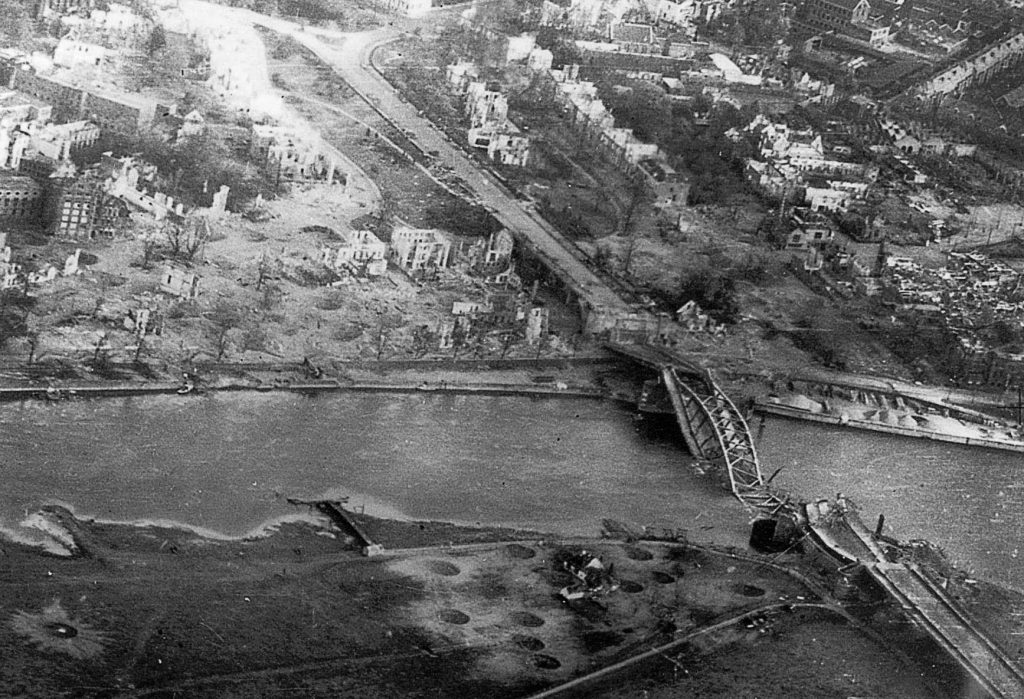The formation of the Nijmegen Salient creates both problems and opportunities for each side.
For the Allies it represents a potential springboard for the adaptation of Eisenhower’s original ‘Broad Front’ strategy, with each Army Group pushing to arrive at the Rhine aligned. With a long supply line reaching back to the Normandy beaches, the initial priority is for Montgomery’s 21st Army Group to clear the Scheldt Estuary to allow access to the port of Antwerp. With American support, 21st Army Group is also to clear the west bank of the Meuse and drive on Venlo; Bradley’s 12th Army Group is to capture Aachen and then, simultaneously with 21st Army Group, pierce the Siegfried Line to arrive on the Rhine on a broad front.
For the Germans, it represents an opportunity to mount a counter-offensive to isolate and eliminate the exposed Nijmegen bridgehead. This would remove the combined threats of the Siegfried Line being bypassed to the north and 15th Army being cut off in the western Netherlands.
Both sides’ plans are optimistic of achieving wider success and the campaign stands at a crossroads.



